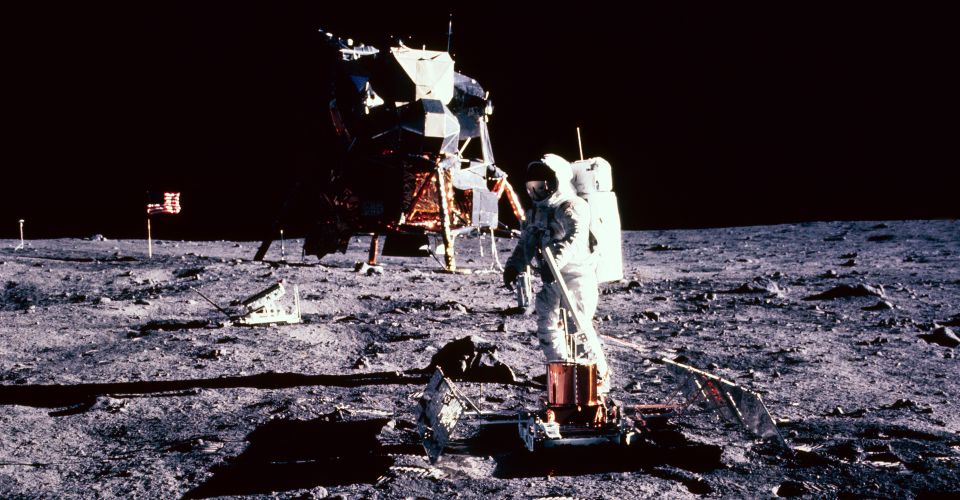Apollo: Missions To The Moon Review: Captivating Space Doc Retells The Race To The Moon

The Apollo program’s mission and eventual success in landing humans on the moon will forever be a story worth revisiting. It’s also one that has received the feature documentary treatment twice in 2019 alone, with the IMAX Apollo 11 and Nat Geo’s Apollo: Missions to the Moon. The latter may not have the advantage of a gigantic screen with which to take in all the spectacle and glory of NASA’s efforts and Neil Armstrong’s momentous first steps onto the lunar surface, but it does have the benefit of being a comprehensive account of the Apollo program, from its determined, seemingly impossible beginnings to its eventual end with the Apollo 17 mission, in 1972.
The Apollo program’s history is an indelible piece of American history as well as the country’s identity. As such, the program’s achievements having been recounted again and again, in fantastic documentaries and feature films, like the Academy Award-nominated For All Mankind, as well as the Academy Award-winning The Right Stuff and 2018’s First Man, which is deserving of reappraisal not yet a year after its initial release. Much of the time, though, the story begins with the Apollo program’s efforts to reach the moon, and end soon after Armstrong sets foot on the lunar surface.
Once NASA, the U.S., and humanity itself made it off the planet and onto another object in our solar system, interest in return trips to the moon was strangely diminished. Though it proved the journey was indeed replicable, Apollo 12 failed to captivate the world quite like its predecessor. Apollo 13 grabbed the public’s attention, though for reasons that excluded the possibility of landing on the moon — which it never did — but nevertheless wove a riveting narrative of survival and life-saving ingenuity, spawning a different kind of story worth retelling in film and other mediums. But the remaining Apollo missions to the moon, up to and including the program’s final undertaking, Apollo 17, struggled to fascinate the public at large with the same intensity as the more historic and famous missions that came before.

So, while other documentaries explore the minutia of, say, Apollo 11 or 13, Nat Geo’s feature-length documentary showcases the Apollo program in its entirety. As a result, the breadth of Apollo: Missions to the Moon is perhaps its greatest selling point and the most appealing reason to tune in.
With 2019 being the 50th anniversary of humankind’s first landing on the moon, it’s no surprise that Missions to the Moon spends a solid chunk of its time covering the Apollo 11 mission and its triumphant end result. While it will always be the crown jewel in NASA’s space-faring legacy, Missions succeeds in establishing, with little effort, the sense of immediacy in the Space Race preceding the entire Apollo program by utilizing footage from a variety of news sources and behind-the-scenes film from NASA that underline the U.S.-Soviet competition to be the first to land a man on the moon, not to mention the competing ideologies fueling the Cold War.
Director and executive producer Tom Jennings has had similar success with the films Challenger Disaster: Lost Tapes and Diana: In Her Own Words, both of which distilled both singular events and eras into fascinating accounts of real-world history. In Missions to the Moon, Jennings has assembled a staggering array of footage, interviews, and stunning still photography in order to distill the sense of exploration, advancement, accomplishment, and national pride that is, for many, synonymous with the Apollo Space Program.

Eschewing the need for a narrator, Jennings relies on the power of the footage he has on hand (which, according to Nat Geo was “500 hours of footage, 800 hours of audio, and 10,000 photos”), in order to piece together this extensive, but still manageable story of the pivotal moments in the Space Race, and the United States’ space program. More remarkable is that Missions effectively becomes a first-person narrative, an account of a huge undertaking the likes of which humanity had never before seen, from the perspective of the people doing the actual undertaking. By eliminating the middleman as it were, Jennings and Nat Geo turn the film into a far more intimate viewing experience. That not only concentrates the storytelling on what matters, by removing any filters between the viewer and Armstrong, Buzz Aldrin, or any number of NASA engineers and fellow astronauts, but it also gives the documentary a greater sense of fluidity, even though it’s following a familiar historical chronology.
Apollo: Missions to the Moon is quite simply an impressive achievement and a thrill to watch. Whether the space race is an obsession or not, Nat Geo’s documentary is a fascinating and entertaining way to ring in the 50th anniversary of humankind’s first steps on the moon, and the enormous undertaking that got them there and back again, time and time again.
Apollo: Missions to the Moon premieres Sunday, July 7 @9/8c on National Geographic.
About The Author
















